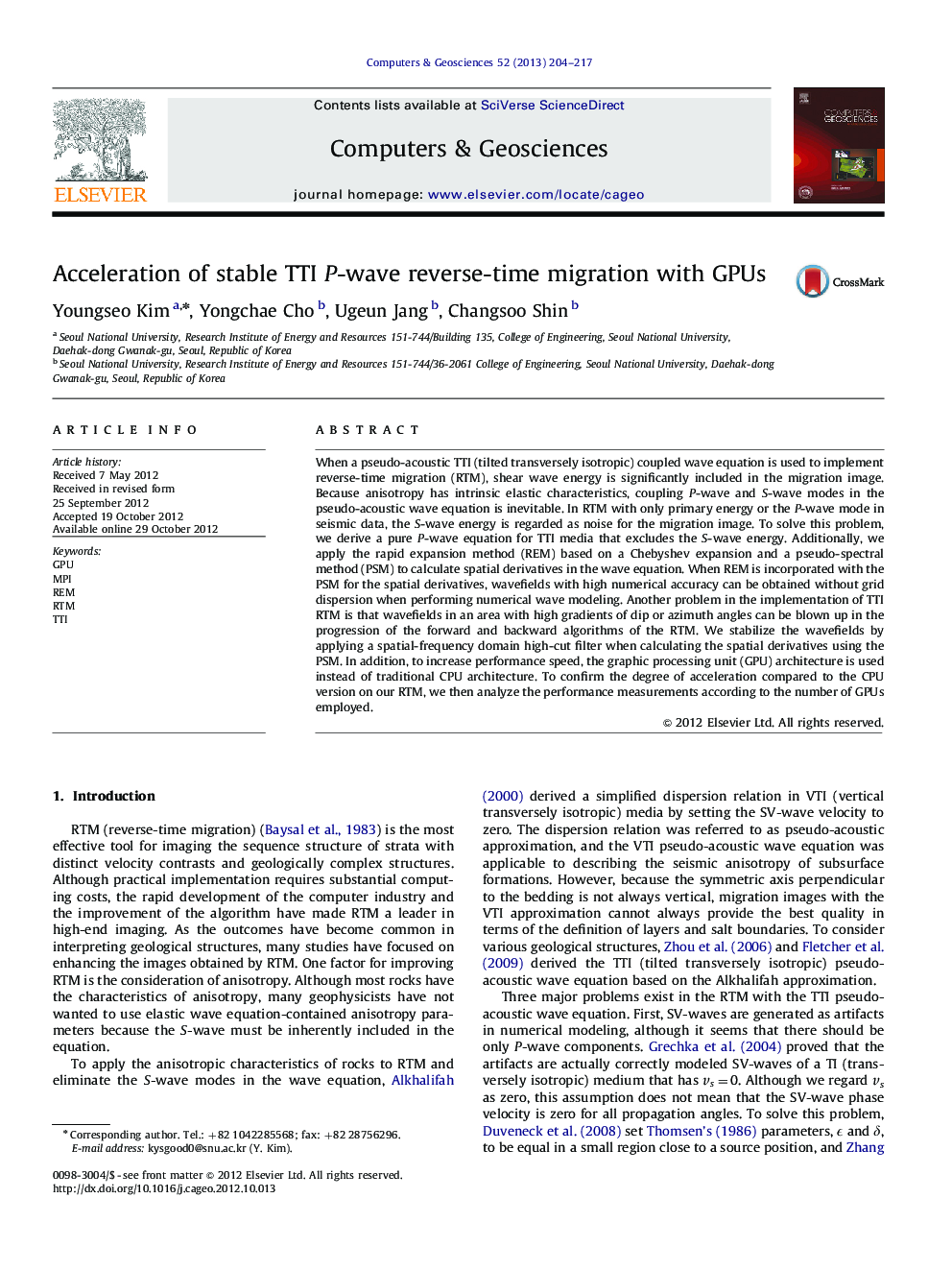| Article ID | Journal | Published Year | Pages | File Type |
|---|---|---|---|---|
| 507891 | Computers & Geosciences | 2013 | 14 Pages |
When a pseudo-acoustic TTI (tilted transversely isotropic) coupled wave equation is used to implement reverse-time migration (RTM), shear wave energy is significantly included in the migration image. Because anisotropy has intrinsic elastic characteristics, coupling P-wave and S-wave modes in the pseudo-acoustic wave equation is inevitable. In RTM with only primary energy or the P-wave mode in seismic data, the S-wave energy is regarded as noise for the migration image. To solve this problem, we derive a pure P-wave equation for TTI media that excludes the S-wave energy. Additionally, we apply the rapid expansion method (REM) based on a Chebyshev expansion and a pseudo-spectral method (PSM) to calculate spatial derivatives in the wave equation. When REM is incorporated with the PSM for the spatial derivatives, wavefields with high numerical accuracy can be obtained without grid dispersion when performing numerical wave modeling. Another problem in the implementation of TTI RTM is that wavefields in an area with high gradients of dip or azimuth angles can be blown up in the progression of the forward and backward algorithms of the RTM. We stabilize the wavefields by applying a spatial-frequency domain high-cut filter when calculating the spatial derivatives using the PSM. In addition, to increase performance speed, the graphic processing unit (GPU) architecture is used instead of traditional CPU architecture. To confirm the degree of acceleration compared to the CPU version on our RTM, we then analyze the performance measurements according to the number of GPUs employed.
► The rapid expansion method based on Chebyshev expansion is used for TTI modeling. ► A pseudo-spectral method is used to calculate spatial derivatives. ► A high-cut filter is applied to stabilize wavefields which may be blown up. ► 2D TTI RTM with multi-GPUs is 2.5–5 times faster than that with multi-CPUs. ► 3D TTI RTM with multi-GPUs is 3–6 times faster than that with multi-CPUs.
